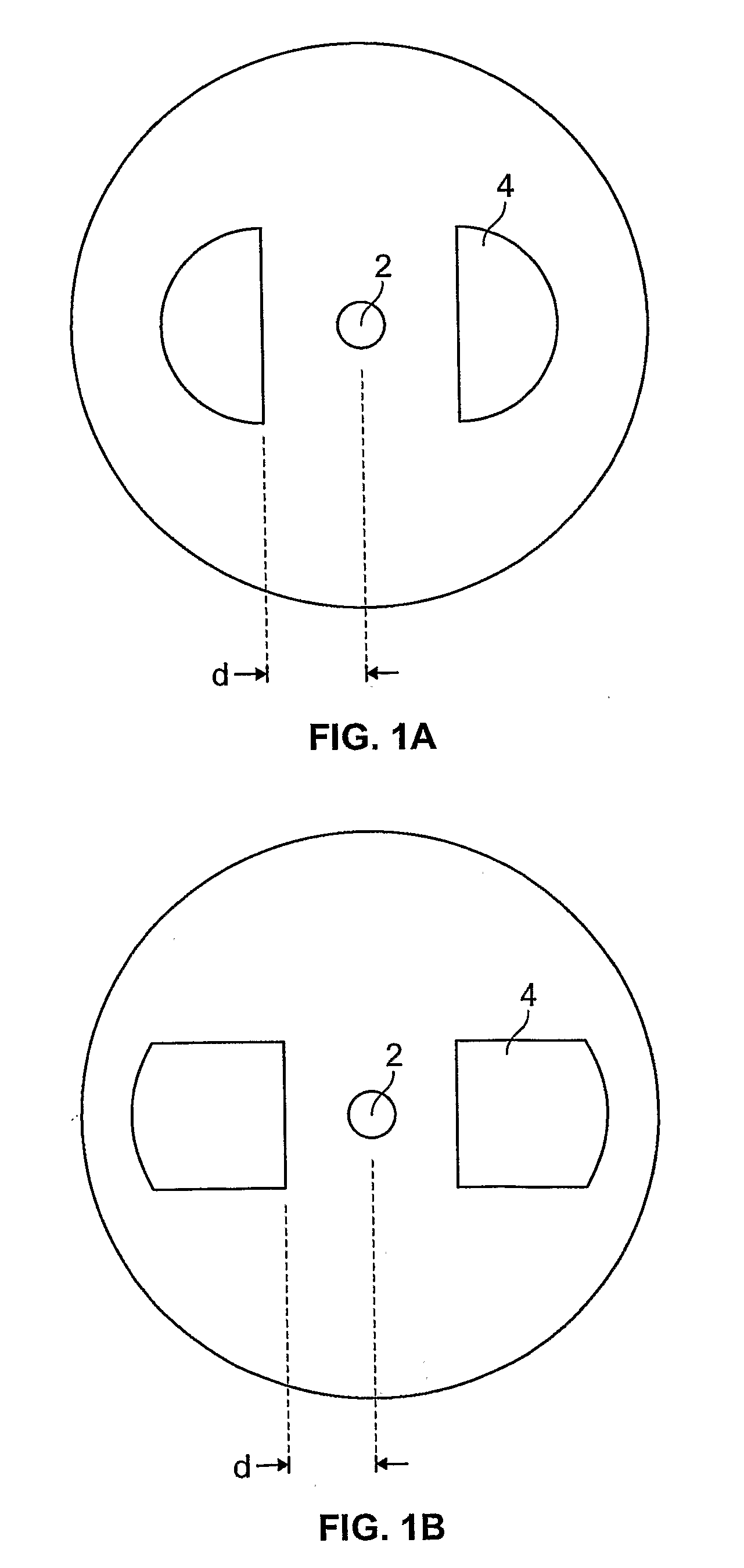Hole arranged photonic crystal fiber for low loss, tight fiber bending applications
a photonic crystal fiber and fiber bending technology, applied in the field of hole-assisted optical fiber devices, can solve the problems of increasing the size the complexity of the tasks involved in making and changing connections, and the storage and management of the connector cabinet, so as to improve the bend performance, reduce the radius of bending, and the effect of low loss hole-assisted
- Summary
- Abstract
- Description
- Claims
- Application Information
AI Technical Summary
Benefits of technology
Problems solved by technology
Method used
Image
Examples
embodiment 1
[0032]For example, FIGS. 1a and 1b show a doped core 2, with dual D hole shaped holes 4 in the cladding to form a pcf fiber that is tightly bendable in one plane (Embodiment I), e.g. to a radius of 5 mm. Tables 1 and 2 give the simulation results on this fiber. Table 1 shows dedicated settings of d (spacing between core center and the hole edge), R hole (the holes are half circles of radius R), radius of the core and core doping. The doping may be Ge and the cladding may be silica. Values of total link loss of less than 0.7 dB more preferably less than 0.6 dB, most preferably less than 0.5 dB are considered to be good at 5 mm radius bend through 180°, i.e. within the scope of the present invention. As these are loss values they may also be given a negative value in which case a preferred loss should be a lower than the absolute value of these losses. FIG. 1a shows two D-shaped holes in the cladding 4, arranged symmetrically about a core 2 with the flat sides of the “D” facing each o...
embodiment 2
[0038]FIGS. 3A and B show embodiments in accordance with the present invention, including a ring of closely packed holes 6 arranged concentrically around a core 2. The holes 6 may be approximately square or oblong or trapezoidal (FIG. 3A) or circular or oval or egg-shaped (FIG. 3B), for example. FIG. 3B shows a manufactured sample of hole assisted fiber. Variations in hole shape and size do not affect the overall performance of the fiber significantly provided the hole to cladding ratio around a circle is not significantly affected. As shown in these embodiments a large amount of the glass or other cladding material in one circle within the cladding and centered on the core comprises the holes, e.g. more than 60%, more than 70%, more than 80% or more than 90% or more than 95% is holes.
TABLE 3widthinner cladouterTotStdOrderRunOrderPtTypeBlocksd corearmsradiusholderlink11118.611630.18522118.631280.3653311831630.28144118.611680.1855118.631280.36566118.631630.2787711831680.1728811811680...
PUM
 Login to View More
Login to View More Abstract
Description
Claims
Application Information
 Login to View More
Login to View More - R&D
- Intellectual Property
- Life Sciences
- Materials
- Tech Scout
- Unparalleled Data Quality
- Higher Quality Content
- 60% Fewer Hallucinations
Browse by: Latest US Patents, China's latest patents, Technical Efficacy Thesaurus, Application Domain, Technology Topic, Popular Technical Reports.
© 2025 PatSnap. All rights reserved.Legal|Privacy policy|Modern Slavery Act Transparency Statement|Sitemap|About US| Contact US: help@patsnap.com



